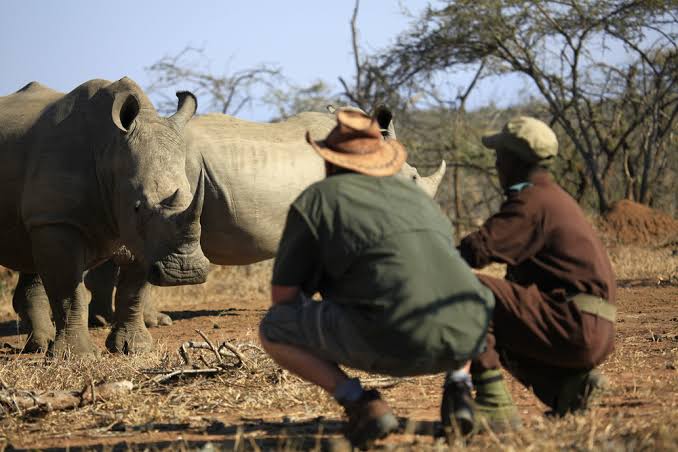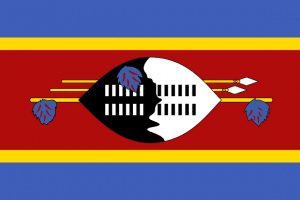WHY SHOULD I VISIT eSWATINI?
Here are our top five reasons why you should visit eSwatini?
- Mkhaya Game Reserve – great place to see black rhino
- Mlilwane Wildlife Sanctuary – experience nature surrounded by Africa’s unique animals
- Hlane Royal National Park – largest herds of antelope in Swaziland
- Piggs Peak – just plain mountain beauty
- Ezulwini Valley – start your adventure here
What is the best time to visit eSwatini?
The best time to visit eSwatini depends on your purpose for visiting. If you are game viewing, the dry months from May to September are best as it is easier to see game when the bush is less dense. If you are hiking, white water rafting or coming for a quiet relaxing stay, the warm, wet summer months from October to March are best. September and April are spring and autumn respectively, and often some of your best months as there is less rain and it is slightly cooler.
For birders, the wet summer months are best as the number of bird species swell with the arrival of the migrants.
Which places should I include in my visit?
If you are coming for the clean mountain air and scenic beauty, you should include Piggs Peak, Hawane Nature Reserve or the Mhlabanyatsi area. If you are visiting to see wildlife you should include Mkaya Game Reserve, Hlane Royal National Park and Mlilwane Wildlife Sanctuary. If you are interested in adventure and cultural activities, Mbabane and the Ezulwini Valley will be your jump-off points.
How long should I visit eSwatini for?
As the game viewing in Swaziland is not of the same caliber as that of many reserves in South Africa, that are relatively close by, I would suggest that you spend a maximum of 2 nights for a game experience. If you are in Swaziland for culture, hiking, relaxing and adventure activities and 4-night stay will be sufficient.
What is the weather like in eSwatini?

Swaziland is once in a while in the path of a cyclone that comes from the Mozambican Channel
eSwatini has the normal four seasons, namely summer, autumn, winter and spring. October to March is considered summer, April & May, autumn, June to August, winter and September spring.
In the lowlands, temperatures can reach into the 30° C at the height of summer, but on the highlands, temperatures are moderate and even cold during winter nights.
eSwatini experiences quite a bit of rain, particularly in the highlands and mountain areas. Most of the rainfall is in summer in the form of thundershowers, however days of continuous are quite common.

eSwatini Highlands Climate Chart

eSwatini Lowveld Climate Chart
Do I need a visa to visit eSwatini?
There is quite a large list of countries that do not require a visa to visit Swaziland. For those countries that do require visas, visas must be obtained before entering the country as no visas are issued at point of entry. These visas can be obtained at eSwatini High Commissions or Embassies. There are a handful of companies based in eSwatini that can also help with obtaining visas.
What are the health requirements for eSwatini?
There is low to no malaria risk in most of the high-lying areas, but as you move lower down, the risk of malaria increases. Anti-malaria medication is recommended, and you should consult your doctor in this regard. To minimise the risk of contracting malaria, wear long trousers and cover your arms in the evening, and apply mosquito repellent.
Yellow fever vaccination is required if you are coming from an endemic country. The following vaccinations are recommended, but not compulsory:
- Hepatitis A & B
- Typhoid
- Tetanus, Diphtheria & Pertussis (TDAP)
- Mumps, Measles and Rubella (MMR)
- Poliomyelitis
- Chickenpox
- Shingles
- Pneumonia
- Influenza
- Rabies
- Meningococcal meningitis
- Cholera vaccinations
How can I travel around eSwatini?
The best way to travel around eSwatini is by renting a car. Transfers from the airport and between places are interest is possible, but quite pricey as is renting a vehicle with a driver and/or guide. I would not recommend local transport unless you are ready for a real adventure.
TOP TOURIST ATTRACTIONS
Mkhaya Game Reserve

White Rhino in Mkhaya
Mkhaya (meaning home) is found in the lowveld of Swaziland. Initially it was set up to preserve the indigenous Nguni cattle, but has since taken on the role of protecting endangered species that once frequented this area. It is one of the best places in the world to see Black Rhino. Mkhaya is divided into several encampments to facilitate the management of such special species as: sable, roan, Livingstone’s eland, tsessebe, buffalo, giraffe and white rhino.
All safaris in Mkhaya are offered on a guide basis only, no-self-driving is allowed. There is only one catered camp in the game reserve.
Mlilwane Wildlife Sanctuary

Reilly’s Rock in Mlilwane
Conservation came to Swaziland reasonably late with Mlilwane the first conservation initiative only being proclaimed in 1961. It is a very narrow piece of land and quite small is size, 4560 hectares, thus unable to support large herds of wildlife. With the possible exception of the leopard (very seldom seen), it has no dangerous game.
Mlilwane is found between Mbabane and Manzini.
Mlilwane can be explored with a guide or as self-guided, mainly on the grasslands in the southern part of the park. The northern part of the park can be explored on horse back or on an overnight trail.
Activities include: walking, hiking, horse riding, the cave trail, cultural experiences, birding, mountain biking, trip to the Rock of Execution, 2 night Klipspringer trail, game and sunset drives.
You have the option of staying in a luxury lodge, rest camps, beehive huts, self-catering rondavels/cottages or camping. The best of the accommodation offering is Reilly’s Rock.
Hlane Royal National Park

Walking safari in Hlane Royal National Park
The 22 000 hectare Hlane Royal National Park was proclaimed in 1967, on the land that used to be the royal hunting grounds. Today the park has the largest herds of antelope in Swaziland. There is a special enclosure that houses a pride of lions and these can only be viewed on guided game drives.
Certain areas of the park are open for self-drives, but other areas are only accessible on guided game drives.
Activities include: day and night game drives, rhino drives (white rhino), mountain biking, walking trails and birding.
Accommodation is available in the form of self-catering cottages.
Pigg’s Peak area

Ziplining in the Malolotja Nature Reserve
The Pigg’s Peak area is one of savannah, mountains, valleys, waterfalls and nature reserves. The town was founded during the gold rush of the late 19th century and also boasts the oldest iron ore mine, namely, Lion Cavern.
Places of interest in the area are: Phophanyane Falls, Hawane Dam, Malolotja Nature Reserve, Ngwenya Glass Factory, Nsangweni Bushman Paintings and the Komati River Gorge.
If you want to really want to experience part of the Swaziland culture, it is possible to became part of a tradition wedding ceremony.
Ezulwini Valley

White Water Rafting in the Ezulwini Valley
This 30km long valley is home to eSwatini’s capital, royal residence and Mlilwane Wildlife Sanctuary. Of interest in the area: Ezulwini Handicrafts Centre, Swazi National Museum, walking, hiking, art galleries, caving, horse riding, birding, mountain biking, white water rafting, quad biking, and golf.
Swazi Candles

Colourful Swazi Candles
Swazi Candles export their products to over 20 countries. Here you have a chance to interact with the candle makers and buy some of these colourful candles.
The eSwatini experience can be yours. Contact Q2 Travel to plan your trip to eSwatini.
GENERAL INFO

Swaziland Flag
eSwatini is a land-locked country surrounded by South Africa to the north and west, and by Mozambique to the east. eSwatini first started to turn their attention to tourism when the casino in the Ezulwini Valley was built.
The official language of eSwatini is Swazi, but English is the language of instruction. Other languages that are spoken include Zulu and Afrikaans.
The population is around 1.37 million people
Contact Us & Sitemap
Latest Articles
- African Safari Tours – Part 4 – Big 3 African Transfrontier ParksDecember 9, 2019 - 7:57 am
 African Safari Tours – Part 3 – Zimbabwe’s trio of safari must dos.November 18, 2019 - 7:07 am
African Safari Tours – Part 3 – Zimbabwe’s trio of safari must dos.November 18, 2019 - 7:07 am African Safari Tours – Part 2 – Unique Animals of AfricaNovember 14, 2019 - 6:52 am
African Safari Tours – Part 2 – Unique Animals of AfricaNovember 14, 2019 - 6:52 am African Safari Tours – Part 1November 13, 2019 - 5:27 am
African Safari Tours – Part 1November 13, 2019 - 5:27 am African ToursSeptember 26, 2019 - 11:25 am
African ToursSeptember 26, 2019 - 11:25 am


